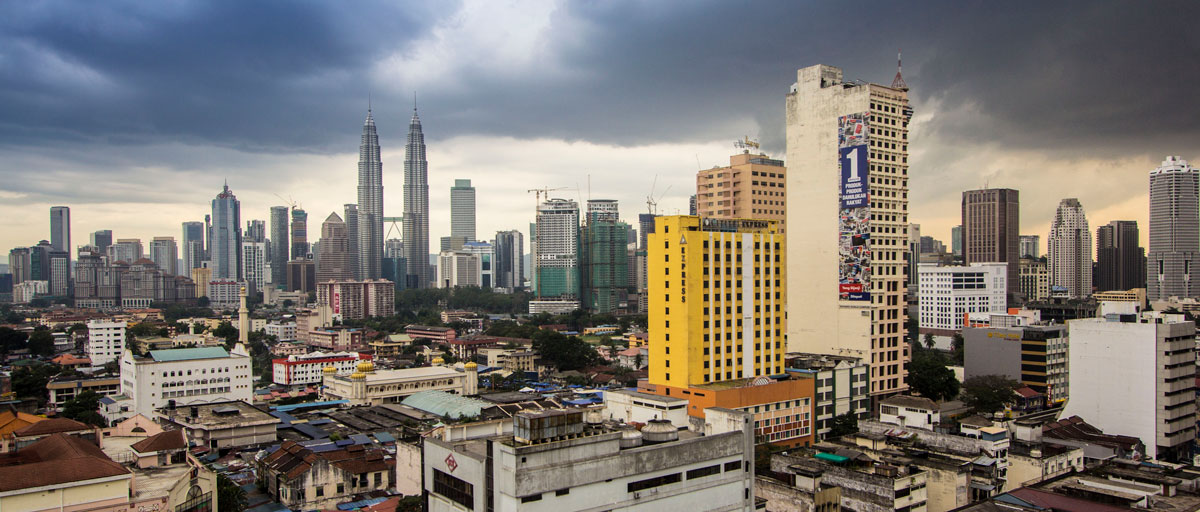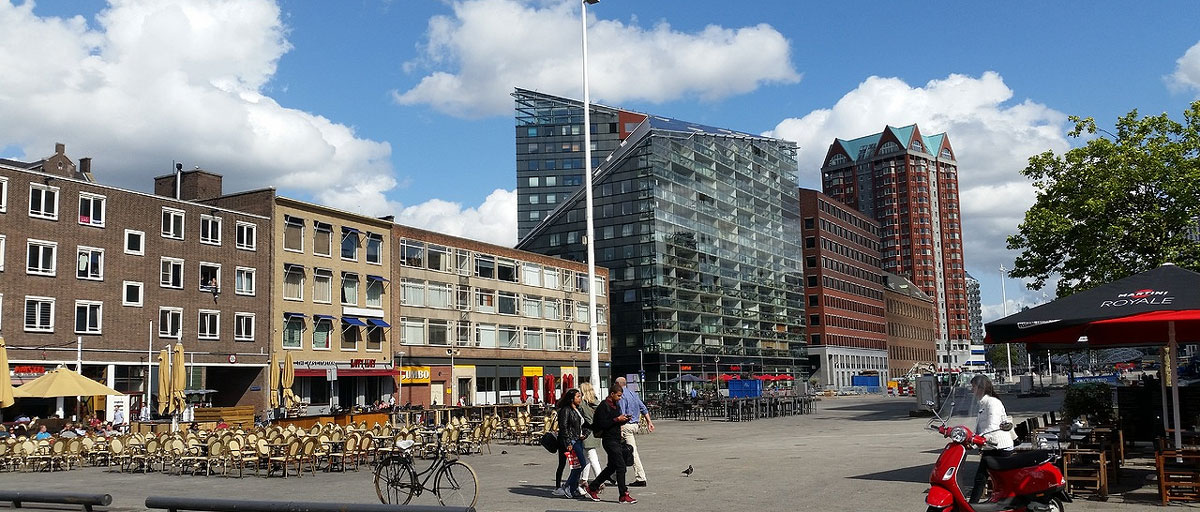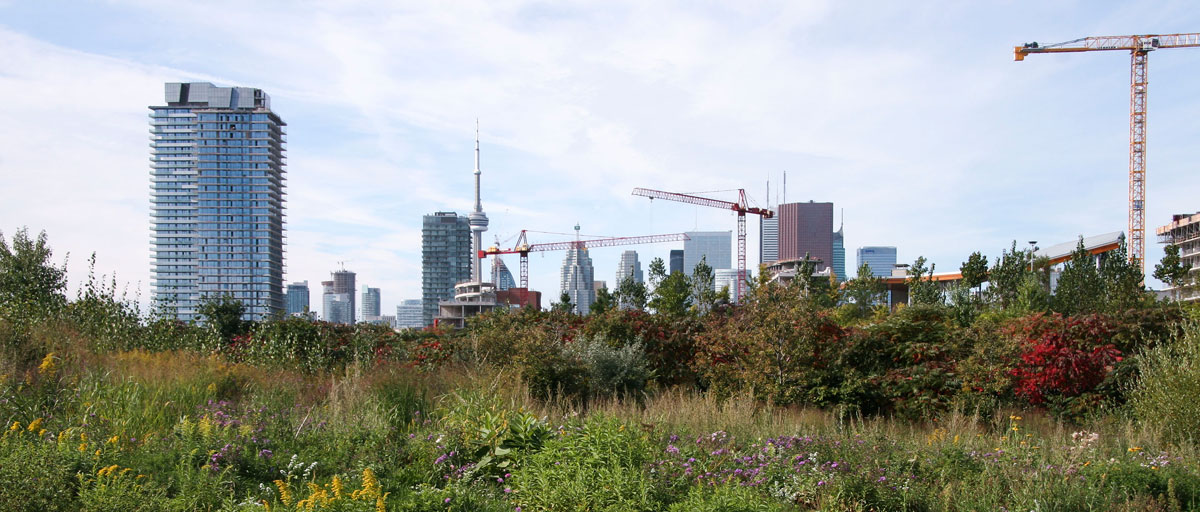
Gathering climate relevant data from cities is no easy feat, not least because cities come in all shapes and sizes. In a comprehensive attempt to push forward the discourse on urban sustainability, researchers from institutions across the world have reviewed the current state of urban data science. Photo: Wikimedia Commons
Bildtext får vara max två rader text. Hela texten ska högerjusteras om den bara ska innehålla fotobyline! Photo: B. Christensen/Azote
URBAN INFRASTRUCTURE
Championing cities for the climate
A state-of-the art review of urban data infrastructure reveals how cities can become powerful agents in the fight against climate change
- With more people living cities, the ways in which cities function and grow is vital to addressing the climate challenge
- This review investigates the contribution of different types of data and data methods in the context of climate change
- The authors propose three routes to upscaling urban data science for global climate solutions premised on harmonizing data collection, on exploiting big data, and on analysing existing climate information by applying advanced computational and data science methods.
Most of us live in cities. In fact, the UN estimates that by 2050 over 68% of humans will live in urban areas. Solutions to global challenges such as climate change cannot ignore the potential that lies in making cities work better for the climate.
Despite these understandings, gathering climate relevant data from cities is no easy feat, not least because cities come in all shapes and sizes.
In a comprehensive attempt to push forward the discourse on urban sustainability, centre researcher Timon McPhearson teamed up with ten other researchers from institutions across the world to review the current state of urban data science.
By studying different data sources and approaches, the researchers provide the quantitative backbone for global urban sustainability science. Their article titled “Upscaling urban data science for global climate solutions” was published in the journal Global Sustainability.
A harmonized and large-scale data infrastructure is required to pave the way towards developing knowledge-based climate solutions for cities worldwide.
Felix Creutzig, lead author
A melting pot
The authors looked at a myriad range of urban characteristics that they deem necessary when designing robust climate mitigation and adaptation strategies. Given the diversity in approaches and in contexts, assimilating knowledge that can inform global urban sustainability science is an uphill task.
The review in Global Sustainability covers significant ground by discussing in depth the following areas:
- Urban metabolism studies to account for urban greenhouse gas (GHG) emissions
- Spatially gridded data on climate obtained from remote sensing
- Big data (including social media)
- Approaches for urban climate policies that use urban planning and economics
- Integrated urban climate, weather and environmental systems
The review relies on an array of case studies set in cities as varied as Paris, New Delhi and Xiamen City (China).
Urban metabolism and changing boundaries
As cities are open systems deciding boundaries for energy and material flows can be complicated. For example, Paris’ city centre imports all its food and exports all its waste. Large city infrastructure such as airports and wastewater plants that use high levels of construction materials are usually located outside administrative boundaries. How then to differentiate between GHG emissions produced inside versus outside a city?
Here, the literature on urban metabolism, which is shaped by factors such as spatial configuration and urban density, has proved handy.
“The urban metabolism literature has served as a blueprint for urban GHG assessments: choosing adequate spatial boundaries is crucial for assessing urban GHG emissions and directly determining the level and quality of emissions,” adds McPhearson.
Once city emissions are estimated, the next step is to aggregate these at a global scale. Authors share the latest work done in this regard while also highlighting how future studies need to take into account a “full infrastructure and life-cycle perspective.”
Making better sense of remote sensing data
For emissions, there is also the possibility of using remote sensing data that cover more ground more accurately.
McPhearson explains its benefits by saying “Remote sensing becomes a more powerful tool for global analysis of urban areas and climate change when combined with weather data and with specialised socio-economic, ecological, and infrastructural data. It also has the benefit of being a method that can be used across many cities.”
The figure below is a good example of putting such data to use. It shows the changes in temperature and rainfall levels in cities across the world between 1901 and 2014.

Mapping direction of change in temperature from 1901 until 2014 and precipitation from 1901 until 2013 in cities. The direction of change is indicated by colour, where I equals warmer and wetter; II colder and wetter; III colder and drier; and IV warmer and drier conditions. Click on illustration to access scientific article
Moving from data to knowledge to climate action
Given the reach of social media today, big data approaches that leverage crowd sourcing can complement more traditional approaches to data collection and are a way to gain insights on how the social, biophysical and infrastructure interact in the context of a city.
“The emergence of multiple forms of big data creates exciting alternatives to assess how people use and respond to urban events, plans, policies and designs for climate change adaptation and mitigation” explains McPhearson.
If privacy concerns can be addressed, big data can become a central tool for online monitoring of urban risks and climate policies.
The authors outline three ways to upscale urban data science for global climate solutions:
1) Mainstream and harmonize data collection in cities worldwide
2) Exploite big data and machine learning to scale solutions
3) Apply computational techniques and data science methods to analyse published qualitative information to understand first-order climate effects and, consequently, create solutions.
Additionally, they suggest using ‘integrated urban weather, environment and climate services’ as proposed by the World Meteorological Organisation (WMO). The WMO has used this integrated approach to develop a guide containing best practices on urban planning and on making cities more resilient to weather hazards such as floods and heat waves.
Building a strong ‘data’ foundation
There are many benefits of creating a ‘Global Urban Data Platform (GUDP)’ that will mainstream different data sources and approaches. Authors envision the GUDP as a comprehensive and harmonized set of data and methods that urban decision makers can use wherever they might be.
As a start, building such a platform would require working across different disciplines such as political studies, urban economics and computer science to produce insights impossible to get when operating in silos. Such a tool is also a critical step in building a new urban science for advancing sustainable urban development.
Although the best design for such a platform is unclear, the authors say global institutions such as Future Earth, Global Carbon Project and C40 are well positioned to take up the mantle of creating it. Some encouraging examples such as the World Urban Database and Access Portal already exist.
The WUDAPT is an international community-based initiative that acquires and disseminates climate relevant data on physical geographies of cities.
McPhearson ends by saying, “Linking big data, advanced modelling, and computation provide the backbone for a new urban science and one that can improve our understanding of the urban climate challenge, as well as point to where and how we can prioritize solutions for resilience. And here, as we show, cities can lead the way.”
Creutzig, F., Lohrey, S., Bai, X., Baklanov, A., Dawson, R. et.al 2019. Upscaling urban data science for global climate solutions. Global Sustainability, Volume 2, 2019, e2

Timon McPhearson is an associate research fellow focused on urban resilience and the role of ecosystems as nature-based solutions for climate change adaptation in cities.









